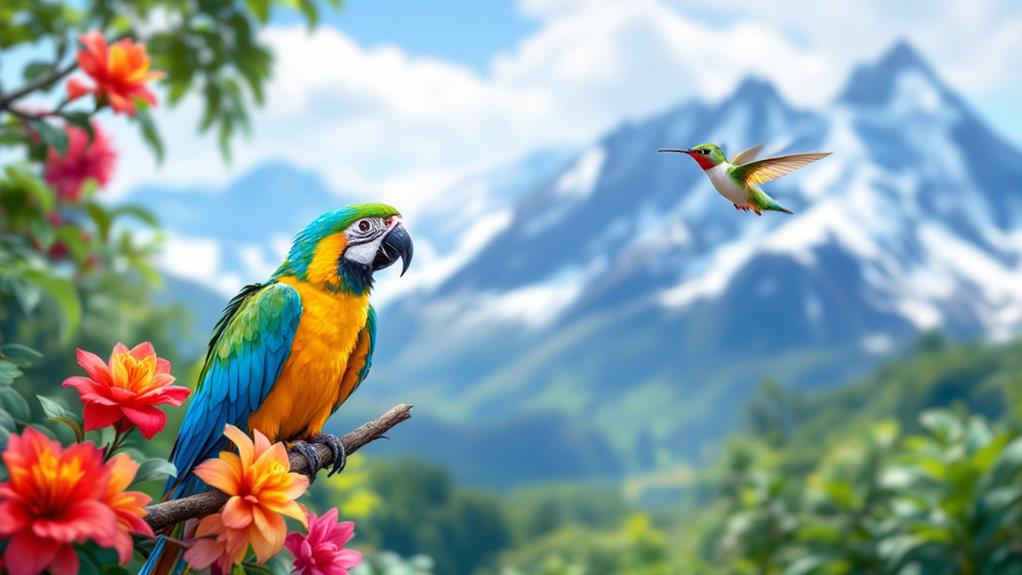Mass Extinction: Should We Be Worried About It? Exploring the Risks
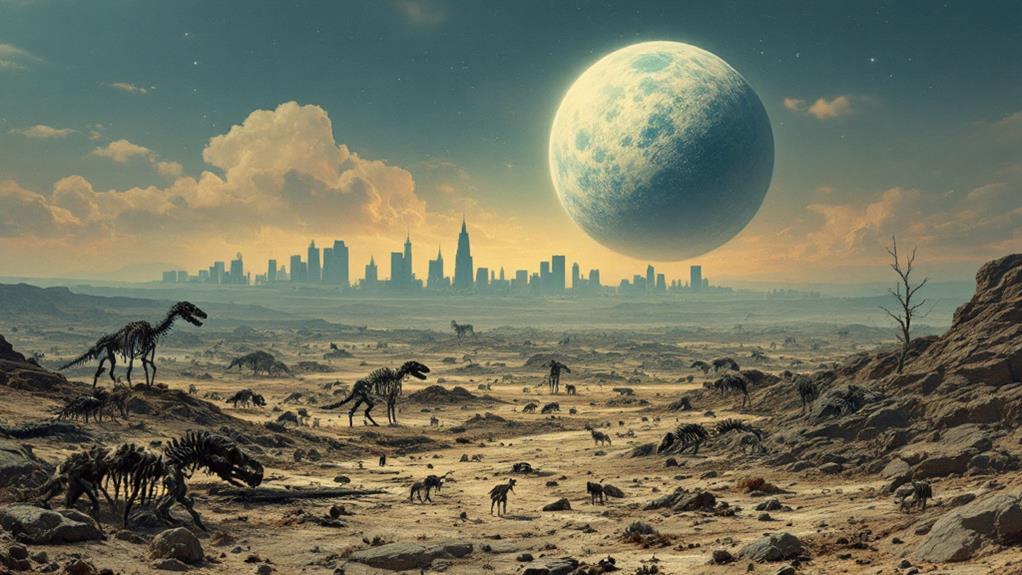
Yes, you should be concerned about mass extinction. Current extinction rates are alarmingly high, 100 to 1,000 times the natural background rate. Human activities, including habitat destruction, pollution, and climate change, are pushing countless species to the brink. This rapid loss of biodiversity threatens to disentangle ecosystems, disrupt food chains, and compromise critical services like clean water and pest control. The consequences extend beyond wildlife, potentially impacting food security, health, and economic stability. While the situation is dire, conservation efforts and sustainable practices offer hope. Understanding the risks and potential solutions can enable you to make a difference.
Defining Mass Extinction
Nearly all scientists agree that a mass extinction is a rapid and widespread loss of species across the Earth. But what exactly qualifies as "rapid" and "widespread" in geological terms? To be considered a mass extinction, the event must eliminate a significant portion of the planet's species diversity within a relatively short time frame, typically less than a million years.
During a mass extinction, the normal evolutionary processes that maintain biodiversity are overwhelmed. You'll find that these events aren't just about the number of species lost, but also the disruption of entire ecosystems and food chains. The impact is so severe that it can alter the course of evolution for millions of years to come.
Scientists have identified five major mass extinctions in Earth's history, each wiping out between 70-95% of existing species. These events are often triggered by catastrophic changes in the environment, such as massive volcanic eruptions, asteroid impacts, or rapid climate shifts. Understanding mass extinctions is integral for evaluating current biodiversity threats and developing conservation strategies to prevent future ecological collapses.
Historical Mass Extinctions
Throughout Earth's 4.5-billion-year history, five major mass extinctions have reshaped life on our planet. These catastrophic events have wiped out between 70% and 96% of all species, dramatically altering ecosystems and evolutionary trajectories.
The "Big Five" extinctions occurred during the Ordovician, Devonian, Permian, Triassic, and Cretaceous periods. Each event was triggered by different factors, including climate change, volcanic eruptions, and asteroid impacts. The Permian-Triassic extinction, known as the "Great Dying," was the most severe, eliminating about 96% of marine species and 70% of terrestrial vertebrates.
In addition to these major events, you'll find evidence of smaller, intermittent extinction events throughout Earth's history. These include the ancient megafauna decline during the late Pleistocene, which saw the disappearance of many large mammals like woolly mammoths and saber-toothed cats.
Current Extinction Rates
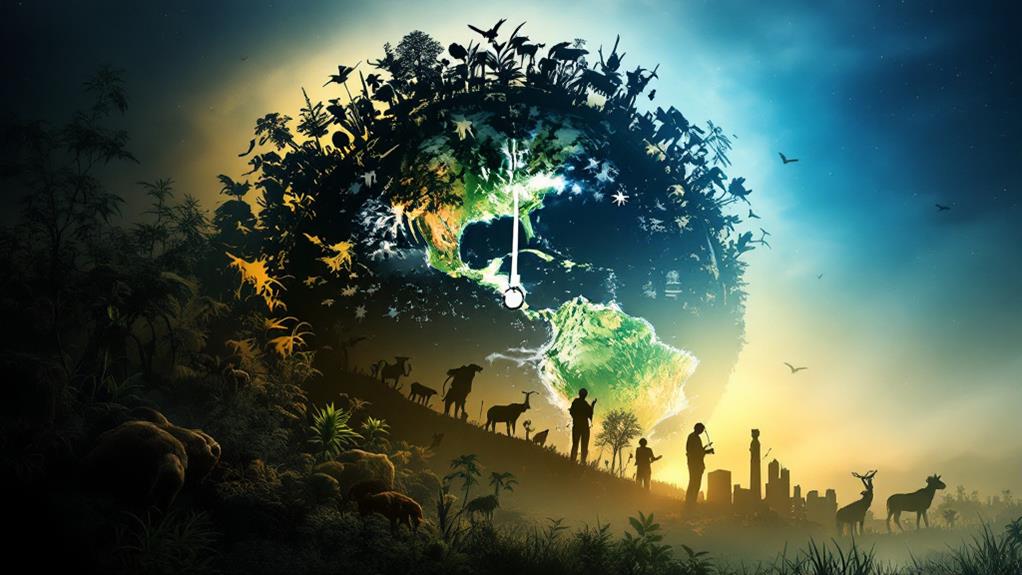
While past mass extinctions have shaped Earth's biodiversity, we're now facing an unparalleled crisis. Current extinction rates are alarmingly high, with some estimates suggesting we're losing species at 100 to 1,000 times the natural background rate. This rapid decline in species abundance is primarily driven by human activities.
You might wonder how scientists measure these rates. They use various methods, including fossil records, historical data, and current observations. One key indicator is the Red List of Threatened Species, maintained by the International Union for Conservation of Nature (IUCN). It provides a thorough assessment of species' conservation status worldwide.
Habitat fragmentation is a major contributor to current extinction rates. As human development expands, natural habitats are divided into smaller, isolated patches. This reduces the available living space for many species and disrupts their movement patterns, affecting their ability to find food, mates, and shelter.
Climate change, pollution, and overexploitation of natural resources further exacerbate the situation. You'll find that many ecosystems are now struggling to maintain their delicate balance, with cascading effects on biodiversity. The current extinction crisis demands urgent action to preserve Earth's rich fabric of life.
Human Impact on Biodiversity
As the primary driver of the current extinction crisis, human activities have drastically altered Earth's biodiversity. You're witnessing a rapid decline in species populations and diversity across the globe, largely due to your actions. Habitat destruction, pollution, and overexploitation are pushing countless species to the brink of extinction.
One of the most significant threats you're posing to biodiversity is habitat fragmentation. As you expand urban areas and convert natural landscapes for agriculture, you're breaking up once-continuous habitats into smaller, isolated patches. This fragmentation reduces the available space for species to thrive and disrupts critical ecological processes.
You're also contributing to the spread of invasive species, which can outcompete native flora and fauna. Through global trade and travel, you've inadvertently introduced non-native species to new environments, often with devastating consequences for local ecosystems. These invasives can quickly dominate habitats, altering food webs and displacing native species.
Your impact on biodiversity isn't limited to land. Overfishing, plastic pollution, and ocean acidification are wreaking havoc on marine ecosystems. You're rapidly depleting fish stocks and destroying coral reefs, which are crucial habitats for countless marine species.
Climate Change and Extinction
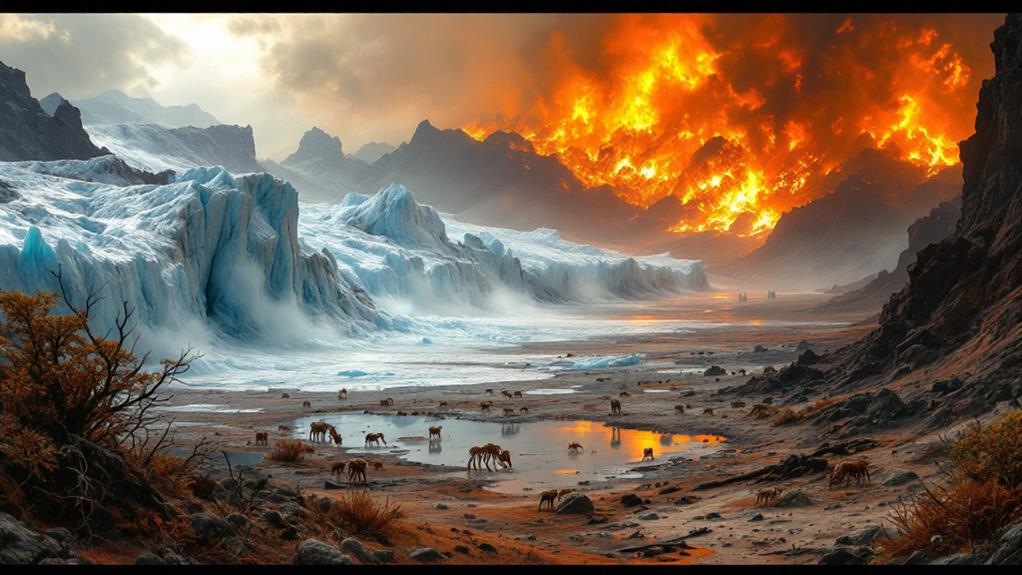
In addition to direct human activities, climate change poses a severe threat to global biodiversity. As temperatures rise and weather patterns shift, you'll witness ecosystems struggling to adapt. Many species are finding their habitats shrinking or disappearing altogether, leading to increased competition for resources and potential extinctions.
Climate change isn't just about warming temperatures; it's causing a cascade of effects that impact wildlife. Ocean acidification, a direct result of increased CO2 absorption, is threatening marine ecosystems. Coral reefs, home to countless species, are particularly vulnerable to these changes. On land, habitat fragmentation is exacerbating the problem. As climate zones shift, many species can't migrate quickly enough to keep pace, especially when their paths are blocked by human development.
You'll see these effects rippling through food chains, disrupting delicate balances that have evolved over millennia. From Arctic sea ice loss affecting polar bears to changing rainfall patterns impacting tropical forests, climate change is reshaping our planet's biodiversity. The rapid pace of these changes leaves little time for species to adapt, potentially leading to a mass extinction event unlike anything we've seen in human history.
Ecosystem Collapse Consequences
Unraveling ecosystems can trigger catastrophic consequences that ripple far beyond individual species loss. As you witness biodiversity loss accelerating, you're facing a domino effect of ecosystem disruption that threatens your very existence.
When key species disappear, entire food webs unravel. Predators lose their prey, herbivores lose their food sources, and plants lose their pollinators. This cascading effect can lead to the collapse of entire ecosystems, disrupting critical services you rely on daily.
You'll face dire consequences as ecosystems crumble. Clean water sources may become scarce as wetlands and forests degrade. Crop yields could plummet without natural pest control and pollination. Coastal communities might lose protection against storms and erosion as coral reefs and mangroves vanish.
Moreover, ecosystem collapse can exacerbate climate change. Forests and oceans, acting as carbon sinks, may release stored carbon as they degrade, accelerating global warming. You'll also lose potential sources of new medicines and materials as diverse species disappear.
Ultimately, ecosystem collapse threatens your food security, health, and economic stability, underscoring the urgent need for conservation efforts.
Conservation Efforts and Strategies
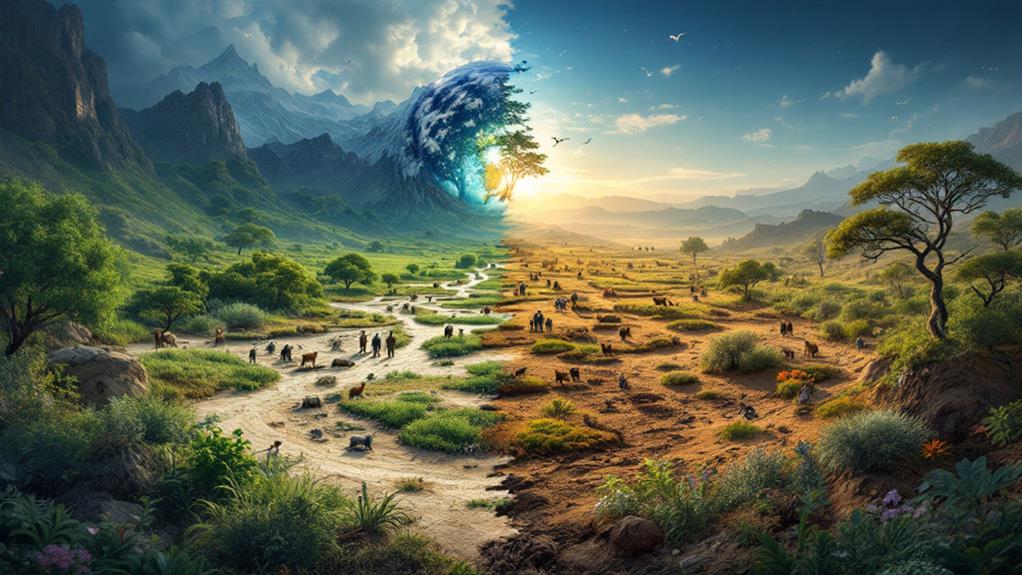
Faced with the looming threat of mass extinction, scientists and conservationists have stepped up their efforts to protect Earth's biodiversity. You'll find numerous strategies being implemented worldwide to combat species loss and ecosystem degradation.
One key approach is the promotion of sustainable agriculture practices. By encouraging farmers to adopt methods that minimize environmental impact, such as crop rotation and reduced pesticide use, we can preserve habitats and protect vulnerable species. Additionally, you'll see a push for biodiversity-friendly land use, which involves careful planning of urban development and infrastructure to maintain wildlife corridors and natural habitats.
You might also notice an increase in protected areas, both on land and in marine environments. These sanctuaries provide safe havens for endangered species and help maintain ecosystem balance. Conservation organizations are working tirelessly to educate the public about the importance of biodiversity and how individual actions can make a difference. Through these combined efforts, you're part of a global movement to safeguard our planet's rich tapestry of life and secure a sustainable future for generations to come.
Future Predictions and Scenarios
Scientists have proposed three main scenarios for Earth's biodiversity in the coming decades. The first scenario paints a bleak illustration, where unchecked human population growth patterns and unsustainable resource consumption lead to widespread habitat destruction and species loss. In this future, you'd witness a significant decline in biodiversity, with many ecosystems collapsing under the pressure of human activities.
The second scenario is more optimistic, envisioning a world where technological advancement impacts positively on conservation efforts. You'd see innovative solutions like lab-grown meat reducing the need for extensive animal agriculture, and advanced monitoring systems helping to protect endangered species. In this future, you'd experience a stabilization of biodiversity loss, though not necessarily a full recovery.
The third scenario falls between these extremes. It predicts a world where some regions successfully implement conservation strategies, while others continue to struggle. You'd observe pockets of thriving biodiversity alongside areas of significant loss. This scenario emphasizes the importance of global cooperation and policy implementation in shaping our planet's future biodiversity.

